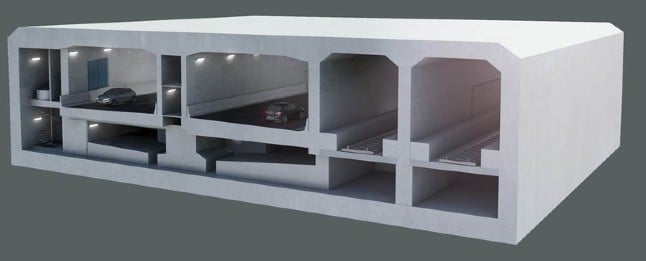Danish parties agree to kickstart $7.5bn Germany link

Denmark's parties have struck a unanimous agreement to launch work on building an 18km tunnel linking the Danish island of Lolland with Germany, in one of the first signs of a return to normal political life.
The country's transport ministry announced in a press release on Friday morning that the seven parties in parliament had struck a "broad political agreement" over the Fehmarnbelt link, opening the way for construction to begin at the start of next year.
"On January 1, 2021, we can take the first step towards what, after just eight years, will establish a new, permanent link between East Denmark and Germany," Denmark's Minister of Transport Benny Engelbrecht (S), said at a press conference.
The tunnel, tabbed at 52bn ($7.5bn) kroner back in 2015, is the most expensive infrastructure project in Danish history, and at 18km will be the longest of its kind anywhere in the world.
READ ALSO: Germany-Denmark tunnel faces more delays
If construction goes according to plan, trains will be able to cross the Fehmarn Belt strait in seven minutes from mid-2029, while cars will make the journey in ten.
The ferry which today takes cars and trains across the strait takes 45 minutes to sail, but well over an hour when boarding times are added in, and as long as two hours for those travelling by train.
In a press release, Denmark's Ministry of Transport, said the start of construction had been pushed back by about six months due to the coronavirus pandemic.
Fehrman A/S, the government-owned company managing the project, had previously been in talks with the Fehmarn Link Contractors consortium about starting work in mid-2020.
"Partly because of the coronavirus crisis this has not proved feasible. The consequence is that the tunnel will open up to six months later than expected. However, it is possible to make up some of the time lost in connection with the contracts not yet tendered for the installations in the tunnel."
Denmark in 2011 opted to use a submersible tunnel to bridge the strait, with two tunnels for trains and two for road traffic.
 Construction is scheduled to begin on the German side by mid-2022.
Construction is scheduled to begin on the German side by mid-2022.
Comments
See Also
The country's transport ministry announced in a press release on Friday morning that the seven parties in parliament had struck a "broad political agreement" over the Fehmarnbelt link, opening the way for construction to begin at the start of next year.
"On January 1, 2021, we can take the first step towards what, after just eight years, will establish a new, permanent link between East Denmark and Germany," Denmark's Minister of Transport Benny Engelbrecht (S), said at a press conference.
The tunnel, tabbed at 52bn ($7.5bn) kroner back in 2015, is the most expensive infrastructure project in Danish history, and at 18km will be the longest of its kind anywhere in the world.
READ ALSO: Germany-Denmark tunnel faces more delays
If construction goes according to plan, trains will be able to cross the Fehmarn Belt strait in seven minutes from mid-2029, while cars will make the journey in ten.
The ferry which today takes cars and trains across the strait takes 45 minutes to sail, but well over an hour when boarding times are added in, and as long as two hours for those travelling by train.
In a press release, Denmark's Ministry of Transport, said the start of construction had been pushed back by about six months due to the coronavirus pandemic.
Fehrman A/S, the government-owned company managing the project, had previously been in talks with the Fehmarn Link Contractors consortium about starting work in mid-2020.
"Partly because of the coronavirus crisis this has not proved feasible. The consequence is that the tunnel will open up to six months later than expected. However, it is possible to make up some of the time lost in connection with the contracts not yet tendered for the installations in the tunnel."
Denmark in 2011 opted to use a submersible tunnel to bridge the strait, with two tunnels for trains and two for road traffic.

Construction is scheduled to begin on the German side by mid-2022.
Join the conversation in our comments section below. Share your own views and experience and if you have a question or suggestion for our journalists then email us at [email protected].
Please keep comments civil, constructive and on topic – and make sure to read our terms of use before getting involved.
Please log in here to leave a comment.